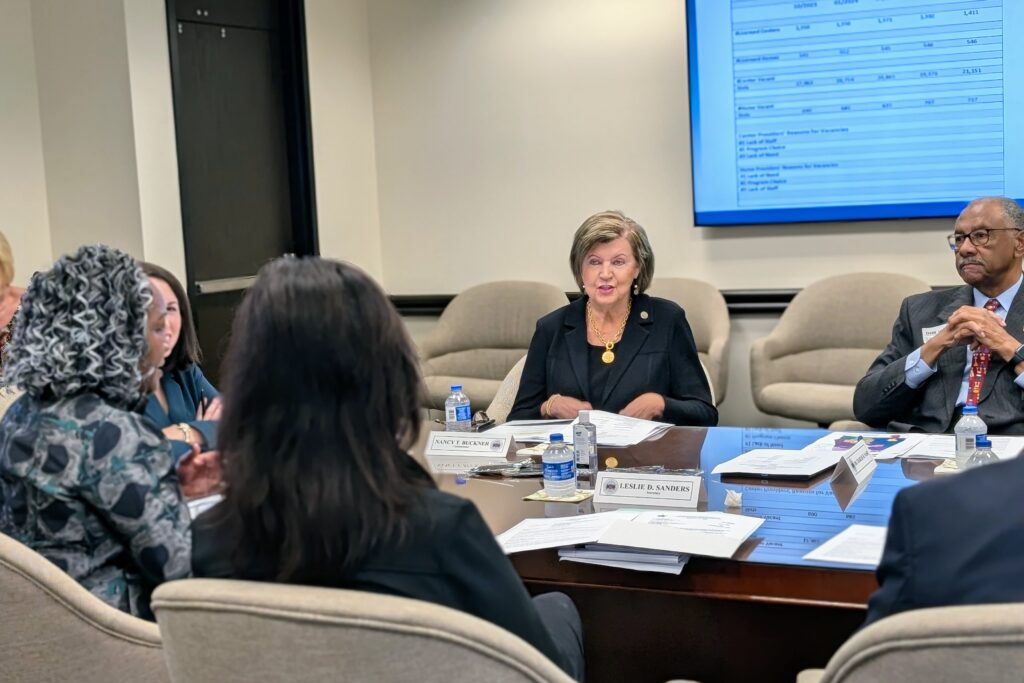Nancy Bucker, commissioner of the Alabama Department of Human Resources, discusses a rise in child care slots across the state in Montgomery on Oct. 24, 2024. (Alander Rocha/Alabama Reflector)
The Alabama Department of Human Resources (DHR) Thursday reported a 17.34% increase in licensed child care slots statewide over the last year, but officials acknowledged that a persistent child care crisis remains.
In a survey conducted in October, DHR found nearly 22,000 vacancies across licensed centers in October 2024, up from 18,653 in October 2023, reflecting a possible mismatch between supply and demand, possibly driven by staffing shortages and evolving family needs.
“People are not sending their kids back to child care. They have a slot out there that’s available to them, but you can see a gradual increase over the past,” said Faye Nelson, deputy commissioner of DHR. Nelson said a lack of need was a challenge behind the vacancy issues.
GET THE MORNING HEADLINES.
DHR Commissioner Nancy Buckner said that “money has a lot to do with it.”
The average annual cost of child care in Alabama ranges from $8,186 for home-based care to $8,771 at a center-based facility, according to the First Five Years Fund, a national nonprofit advocating for affordable child care. Infant care in Alabama costs on average $3,826 less than yearly in-state tuition for four-year public college, according to the Economic Policy Institute.
Rhonda Mann, executive director of VOICES for Alabama Children, said in a statement that families in many parts of the state are still facing a lack of child care slots due to accessibility and affordability issues.
“These might include working families needing regular care but living in rural areas; working families with infants; special needs children, and parents who work non-traditional hours,” she said.
Mann said that the child care needs of these special groups won’t be easily addressed since these families are spread throughout the state instead of concentrated in one area.
“We will continue to support the work being done to strengthen the child care industry in our state so that all working families have accessible and affordable options to meet their needs,” Mann said.
When asked after the meeting if child care needs to be funded at the same level as K-12 education, she said that there are discussions on the federal level about increasing funding for child care, and she said that would be helpful.
“It would help if the block grants were increased, more money to the providers,” she said.
Board members also discussed whether there might be child care deserts in the state and whether child care slots are not in the right places.
DHR data showed that while home-based child care has stayed steady over the last year, the state’s total number of licensed child care centers grew from 1,350 to over 1,411 over the past year.
Buckner said DHR continues to work with state workforce development agencies, hoping to address both the geographic disparities in childcare availability and the ongoing lack of trained staff. She said that they rely on the private workforce to tell them where there might be potential child care deserts.
“What we like is to hear a little more from employers that say ‘I need employees. I can’t get them in this particular town in Alabama because of child care,’” Buckner said.
YOU MAKE OUR WORK POSSIBLE.

